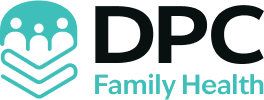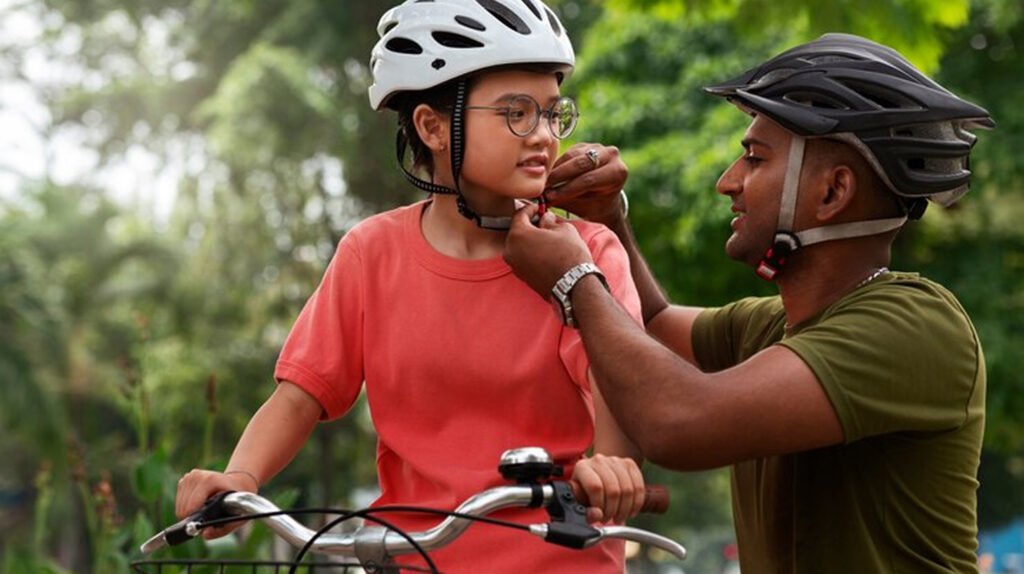“How have you incorporated personalized healthcare into your family’s approach to sports and physical activities? What’s one surprising benefit you’ve seen from this?”
Based on each individual’s age, hormonal health, orthopedic limitations, lifestyle, and personal preferences

As a senior rehabilitation specialist, I don’t just understand the benefits of physical activity, I see its absolute necessity across all age groups every day. In my own family, we have members in their 80s, 50s, 20s, teenagers, and even two energetic canines. Needless to say, fitness applies to everyone — but the how needs to be personalized.
We’ve intentionally incorporated sports, movement, and preventive health measures based on each individual’s age, hormonal health, orthopedic limitations, lifestyle, and personal preferences. This includes tailored exercise routines, dietary adjustments, as well as regular blood tests to track key health markers and guide necessary supplements. It’s been a gradual process, but the improvements in mobility, energy levels, and overall quality of life have been remarkable.
Interestingly, our household has found common ground in simple, accessible tools like resistance bands, static cycles, and vibration plates, which everyone uses as part of their daily routine, alongside personalized programs, proactive health monitoring, and targeted supplementation, ensuring everyone functions at their best.
But the most surprising benefit? It hasn’t just been the physical improvements, it’s the relationships. We’ve built a small fitness and wellness community right within our home. Movement, health conversations, and shared goals have strengthened our family bonds more than we expected. And when friends or relatives visit, they often get drawn into these “chitchat-coated consults” which spark their own interest in adopting similar routines too.
As a staunch believer in the power of exercise, I always recommend implementing simple practices at home. After all, movement is medicine.
Garima Gaur, Senior Rehabilitation Specialist,
Built around our genetic quirks and recovery habits, not just some generic workout advice

After my son’s constant basketball injuries last year, we finally ditched the one-size-fits-all team training program. Instead, we met with a sports medicine specialist and built workouts tailored to his own biomechanics and injury history.
In just three months, his chronic ankle pain disappeared. On top of that, his vertical jump shot up by four inches—turns out, the personalized plan fixed muscle imbalances we never even noticed before.
The real game-changer? We started doing movement screenings every eight weeks. That let us catch problems before they turned into injuries, and tweak his training on the fly whenever he hit a growth spurt or needed something different.
Now, we’ve taken this approach beyond basketball. I use it for my marathon training, and my daughter does too for soccer. We all have our own recovery routines, nutrition schedules, and training intensity—each built around our genetic quirks and recovery habits, not just some generic workout advice.
The biggest surprise wasn’t even physical. It was how much better we all felt mentally, just from being treated as unique athletes with our own needs.
My teenager said it best: “It’s the first time I feel like I’m working with my body instead of trying to force it to do what everyone else’s can do.” That shift in mindset? It’s made him way more consistent and committed to staying active, and honestly, I think that’s the best part.
Joe Hawtin, Owner, Marin County Visitor
Paying closer attention to each person’s unique needs, strengths, and recovery patterns

We’ve started focusing more on personalized healthcare in our family’s approach to sports and physical activity by paying closer attention to each person’s unique needs, strengths, and recovery patterns. Instead of following one plan for everyone, we now look at things like individual energy levels, injury history, and even how each of us responds to different types of training. For example, one of us thrives with high-intensity workouts, while another does better with steady movement like walking, yoga, or swimming.
One surprising benefit has been fewer injuries and faster recovery. When we started listening to our bodies instead of pushing through just to stick to a rigid routine, we actually saw better performance and more consistency. Taking rest days seriously and adjusting workouts based on how we feel has made staying active more sustainable and enjoyable.
My biggest tip? Tune in instead of pushing through. Personalized care doesn’t have to mean complicated plans—it can be as simple as adjusting your activity based on how your body feels that day. The more you listen, the more you can move in a way that supports long-term health and keeps the whole family active.
Taylor Gardner, Health Coach, Gardner Therapy Group
Focused on their individual fitness need

Incorporating personalized healthcare into our family’s approach to sports has been a game-changer, especially for my kids. Instead of following generic workout routines, we’ve focused on their individual fitness needs. I worked with a sports physiologist to tailor exercises based on their body types and fitness levels. For example, one child, who has flat feet, now uses custom insoles for better support, which has improved their performance in soccer. One surprising benefit I’ve seen is the significant reduction in injuries. Since we’ve customized their routines, my kids have experienced fewer muscle strains and joint pain, even after intense practice sessions. It’s made a huge difference in how they recover and maintain energy levels, and it’s reinforced the importance of understanding each person’s unique physical needs when it comes to sports and physical activities.
Nikita Sherbina, Co-Founder & CEO, AIScreen
Tailor our physical activities according to our individual needs and abilities.

Incorporating personalized healthcare into my family’s approach to sports and physical activities has been one of the best decisions we’ve made. Not only has it improved our overall health and well-being, but it has also brought us closer together as a family.
One surprising benefit that we have seen from this is the improved communication and understanding among family members. By actively participating in each other’s fitness journeys, we have gained a better understanding of each other’s strengths, weaknesses, and goals. This has led to more open and effective communication within our family unit.
Personalized healthcare has also allowed us to tailor our physical activities according to our individual needs and abilities. This has not only improved our overall fitness levels, but also helped us prevent injuries and health issues.
Michael Yerardi, Founder & CEO, Turning Point Home Buyers
From ensuring our children have proper nutrition to incorporating individualized training programs

As a parent and avid sports enthusiast, I have always believed in the importance of personalized healthcare when it comes to my family’s approach to physical activities. From ensuring our children have proper nutrition to incorporating individualized training programs, we have seen significant benefits from taking this approach.
One surprising benefit that I have noticed is the mental impact personalized healthcare has on my family’s overall performance and enjoyment of sports. By tailoring our approach and focusing on each person’s unique needs, we have seen an increase in confidence, motivation, and overall well-being.
For example, my daughter struggled with anxiety when it came to competing in track meets. Through working with her coach and implementing personalized techniques such as breathing exercises and positive self-talk, she has been able to overcome her anxiety and even set personal records in her events.
Geremy Yamamoto, Founder, Eazy House Sale
By using genetic and biometric testing

Personalized health insights transformed our family’s approach to sports from competitive to sustainable.
By using genetic and biometric testing, we tailored activity choices and intensity to each family member’s recovery patterns, injury risks, and even preferred movement types. For example, one child shifted from soccer to swimming after markers suggested higher joint stress—resulting in fewer injuries and more joy. The most surprising benefit? We’ve had deeper conversations about health ownership, even with our kids.
I’m David Quintero, CEO of NewswireJet. Understanding individual limits and optimizing performance isn’t just good PR advice—it’s how I lead my team and my family.
David Quintero, CEO and Marketing Expert, NewswireJet
Assess each person and base training, recovery, and nutrition plans

Being the Program Coordinator at Healthy Outlook and a mother of two active teenagers, the area of personalized healthcare became the core of our sports and other physical activities as a family. We have since gotten rid of one-size-fits-all fitness plans, and now have to assess each person and base training, recovery, and nutrition plans on them.
We started with baseline fitness assessments and genetic testing to know what every child needs as well as what their risk factors are. As an example, the profile of my son showed that he was more likely to get an injury on the joints, and accordingly, we added preventative exercises on strength and mobility during his soccer training process.
The analysis done on my daughter revealed a more effective response to high-protein diets and endurance-based conditioning. According to this, we have customized her diet and have also modified her track training so that she gains maximum recovery and long-term performance. The changes brought significant improvements which were measurable in their level of energy, consistency, and injury prevention.
And actually one of the positive effects that we have experienced has been the development of increased mental strength and emotional understanding by both children. They have a more controlled feeling and the confidence levels with their physical capabilities increase when their routines are tailored to suit their personal needs.
They no longer blindly follow what the coach wants to do, but rather they initiate action; they ask questions, monitor the way they feel following various workouts, and make manipulations when necessary. It has given them the power to champion their health and be more vocal about physical or mental burnout.
This feeling of owning has gone beyond sports, as it has made them more disciplined, self-conscious, and motivated in school and other spheres of life. Personalized healthcare has not only led to better physical results but also groomed a healthier and more aware attitude within our family.
Holly Dufresne, Program Coordinator, Healthy Outlook Inc.

